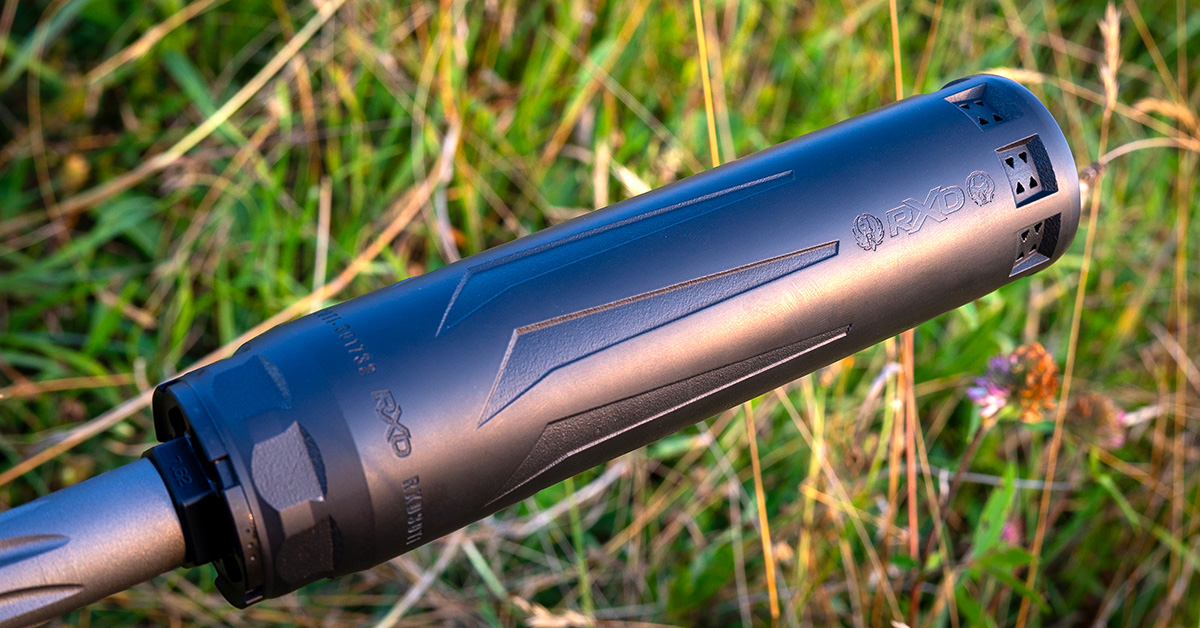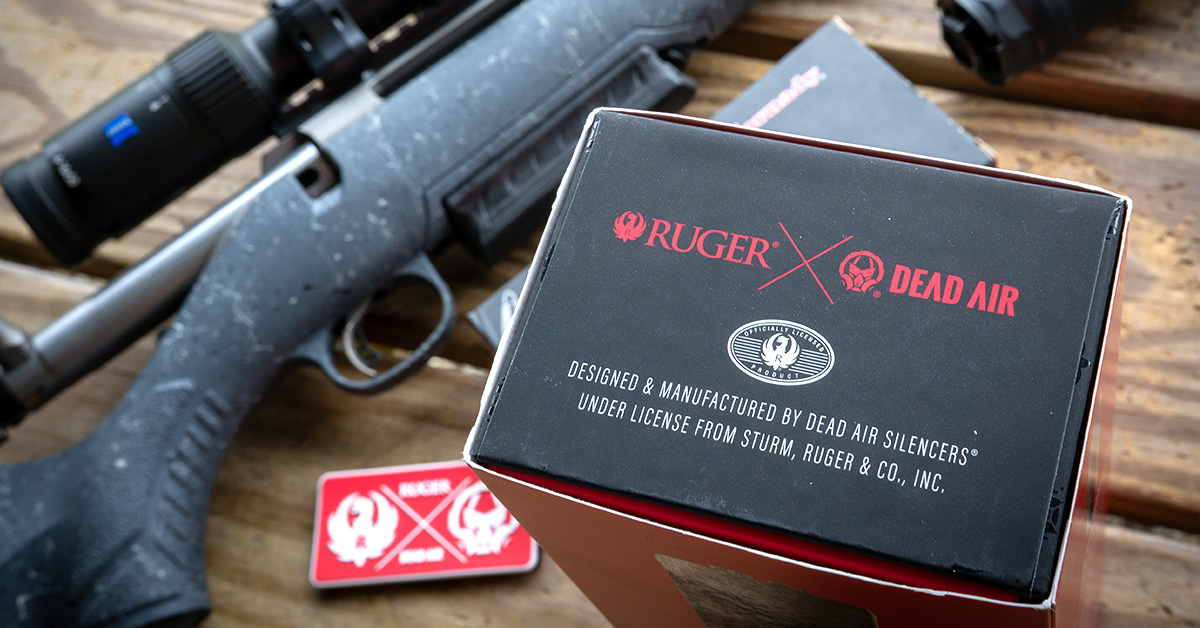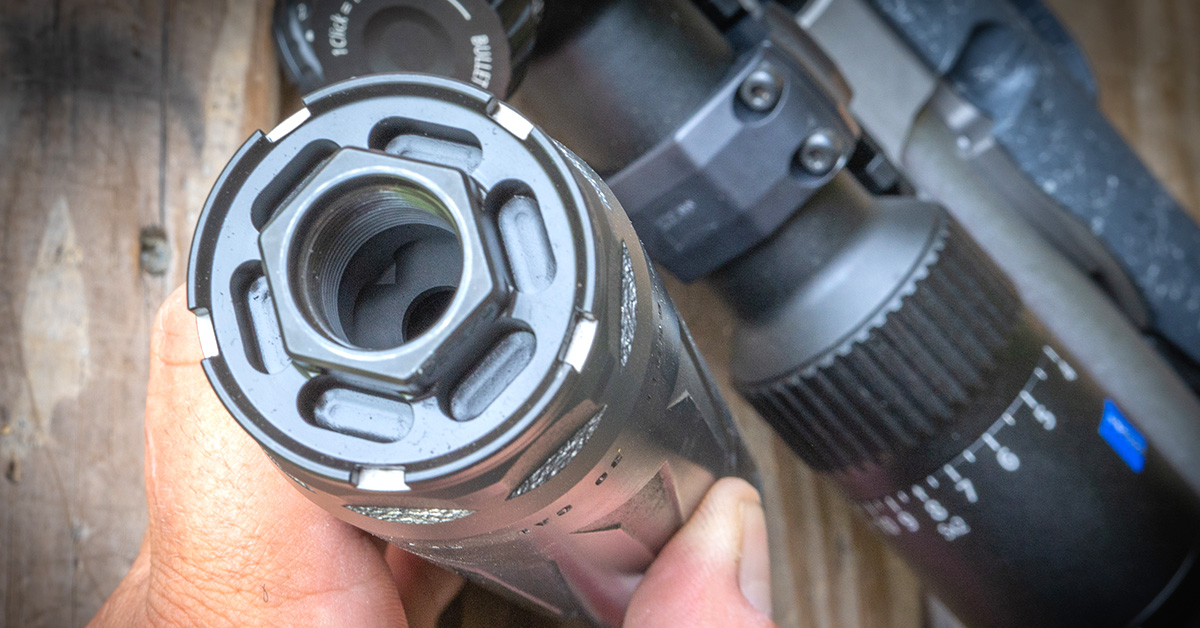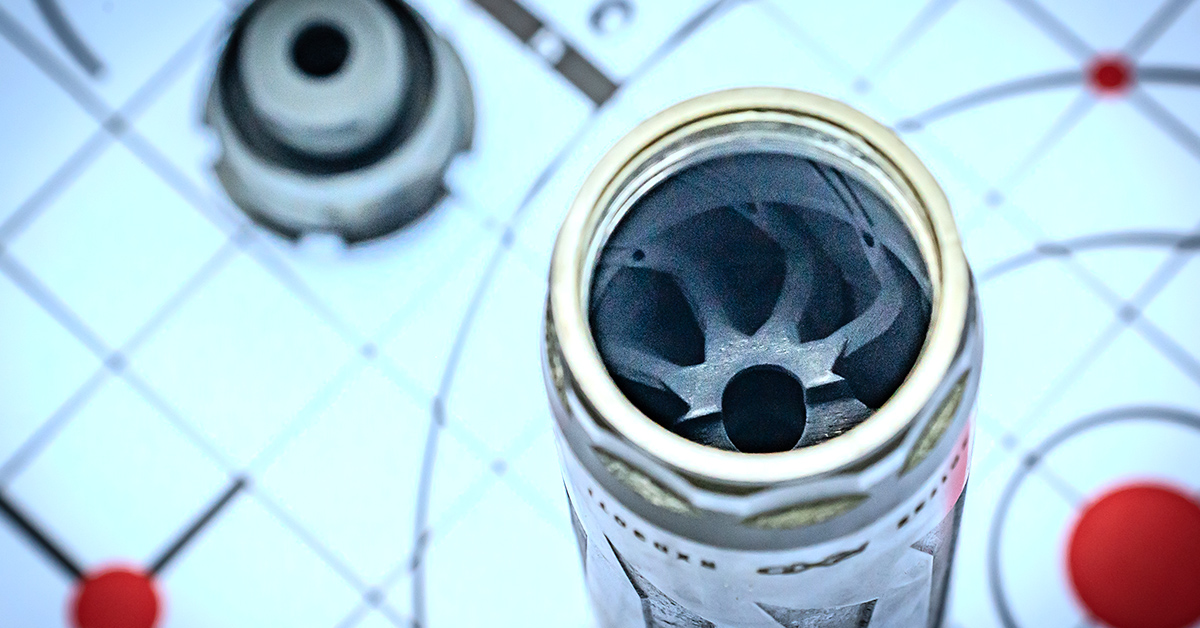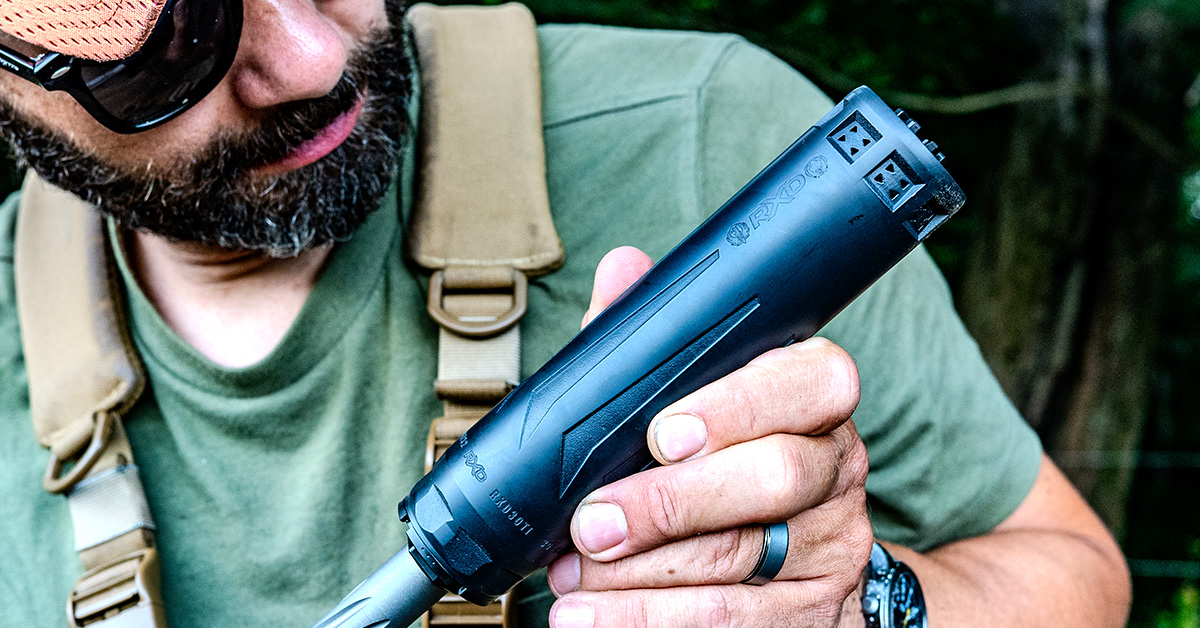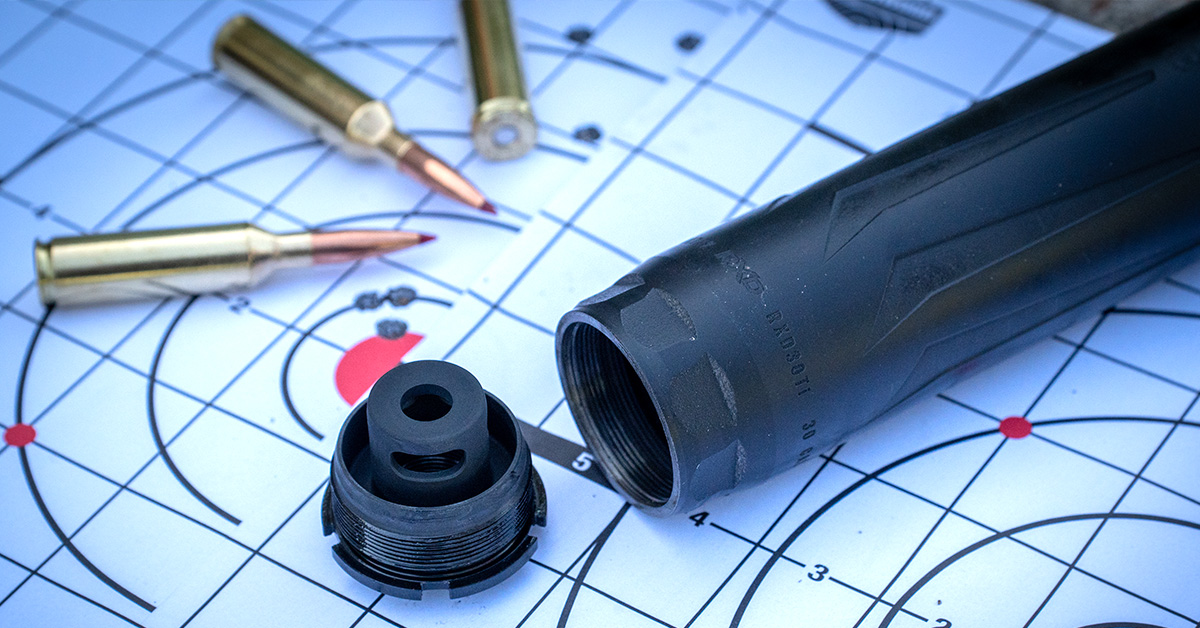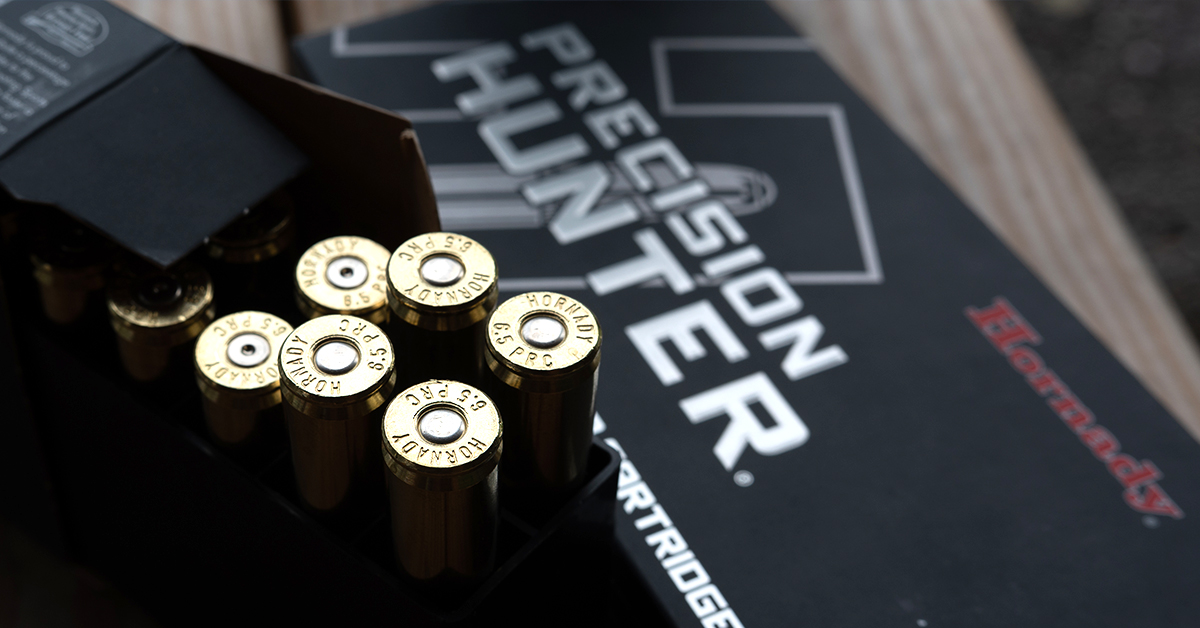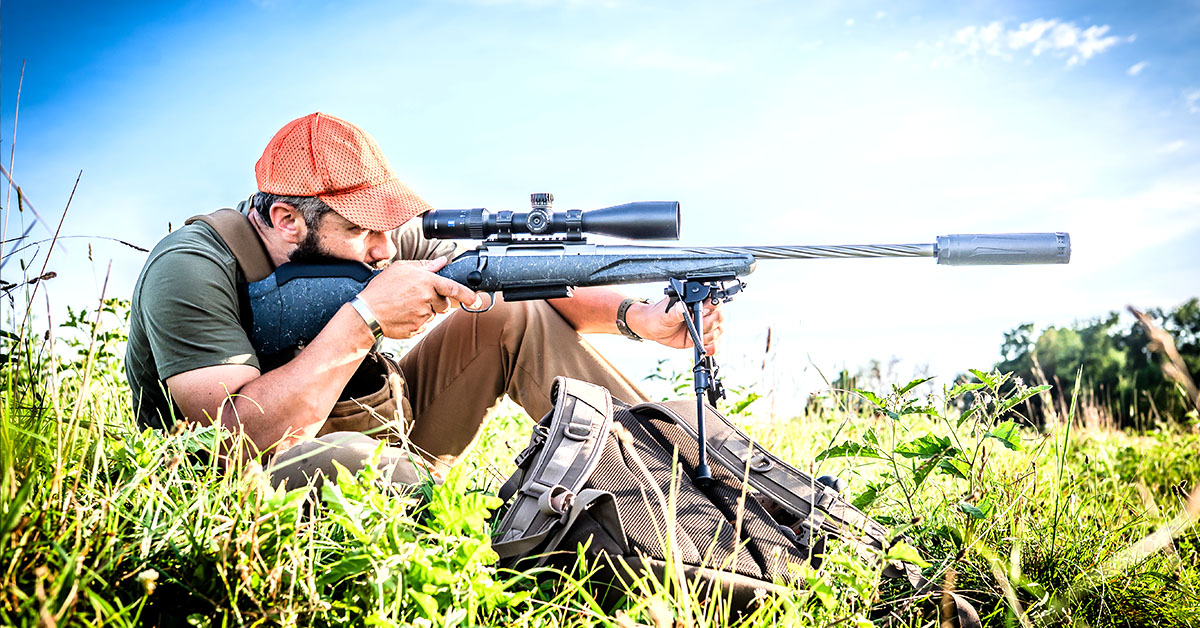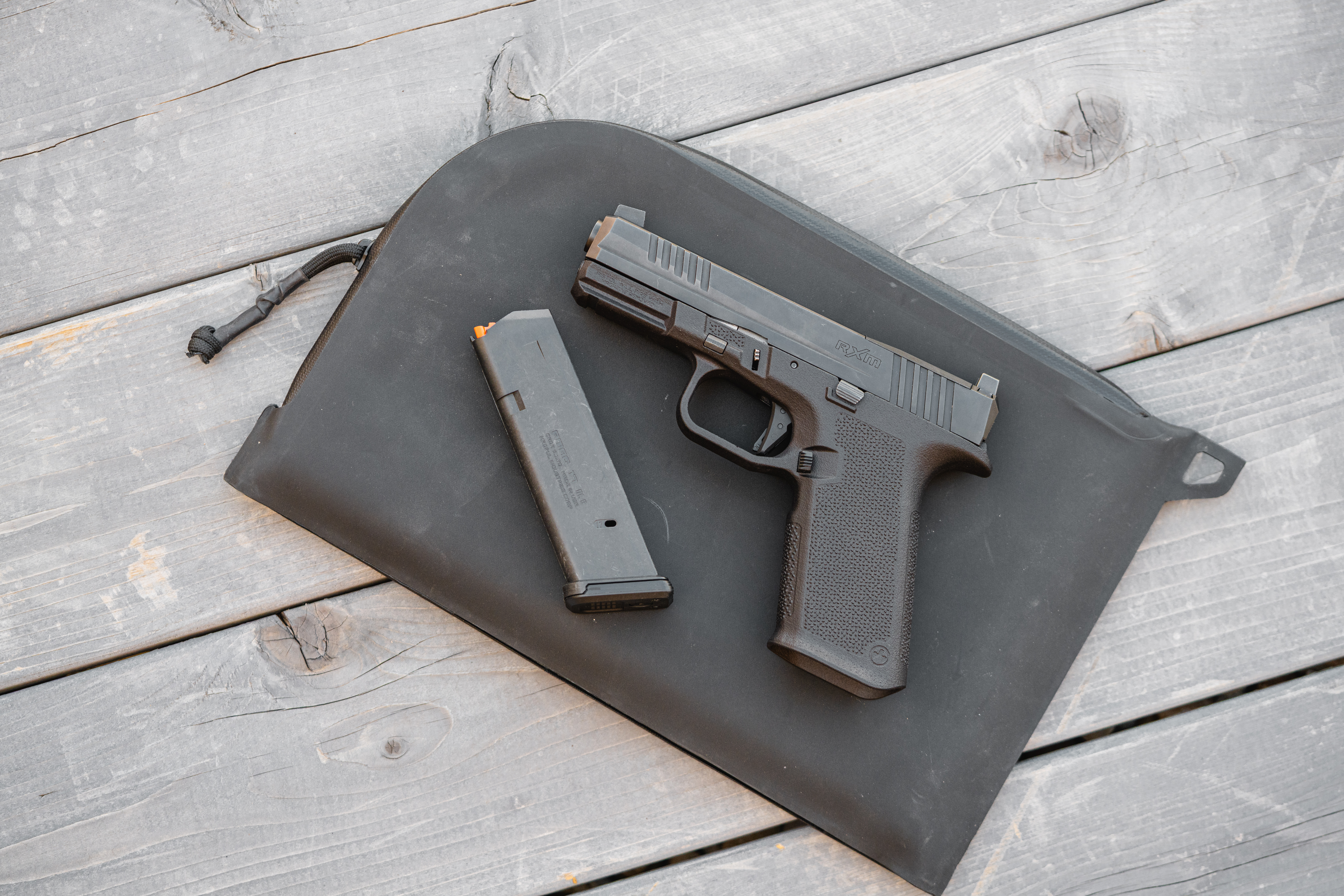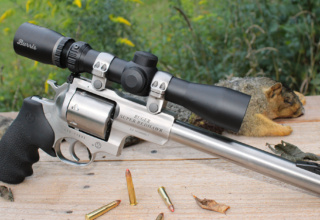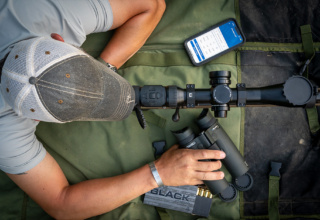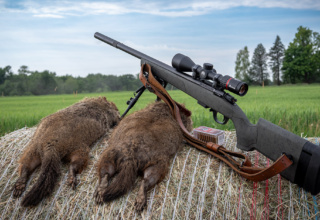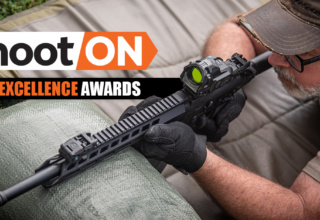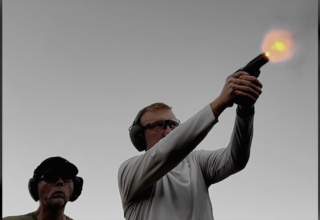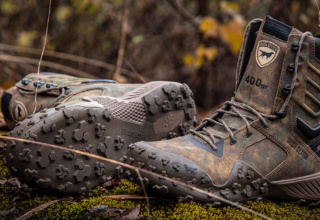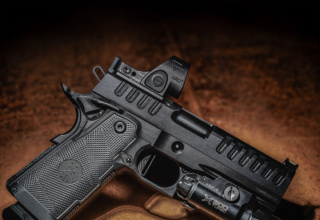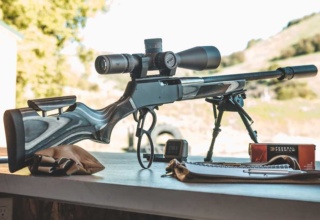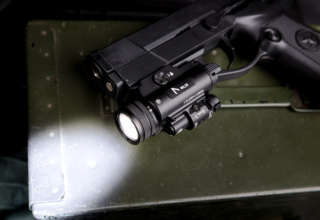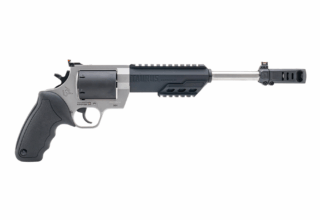The RXD 30Ti suppressor — a collaborative effort merging the visions of industry powerhouses Ruger and Dead Air Silencers — represents a represents a leap in suppressor expectations and performance
by David Kelley
With Ruger’s American Rifle Generation II series, their compact Scout Rifles, and Ruger Precision Rifles all factory-threaded for each available chambering, it was a natural and logical progression for the company to take the next step in keeping up with consumer needs. That step involved Ruger tasking Dead Air Silencers with the development of the RXD 30Ti, a centerfire suppressor wearing the iconic Sturm, Ruger & Co. phoenix emblem on its tube.
Presented during the 2025 NRA Annual Meetings & Exhibits along with the RXD22Ti, these new suppressors have surely created their share of attention across the firearms industry and social media platforms in a brief period.
Figuring that the suppressor would be an existing can from Dead Air, merely stamped and packaged with the Ruger logo, was an erroneous assumption on my part. Being familiar with both brands’ noteworthy history and past innovation should have been the sign that this suppressor would be a unique item with some distinctive features. Putting the designers of these two companies together for the product fills a void in the “what’s available” category.
The Ruger RXD 30Ti suppressor release perfectly timed with my regular summer trips to the varmint hunting fields. Pennsylvania hunting opportunities and available range facilities are easy to access during the summer, including my backyard range that is currently under construction to 200 yards. The rural/semi-rural abode is an appropriate place to maximize the use of a firearm suppressor to keep peace with neighbor folks and hobby farmers, and they fit nicely on the modern hunting rifle.
The Can
Upon receipt of the suppressor, the packaging design reveals the naming convention of the RXD 30Ti. Embossed on the container are “Ruger” and “Dead Air” in text and logo, separated by an “X” — RXD. The 30 indicates that this suppressor is for .30-caliber cartridges and below, then the Ti (titanium) for material used in the 3D printing of the suppressor body rounds out the title.
The contents of the package include the suppressor, a quick-start guide, hex and TL1 wrenches for removal of the HUB, and a well-designed hook-and-loop patch that wears the brand logo. Removing the suppressor from the plastic sleeve gives the user immediate notice that it’s a titanium body. At 7.34 x 1.74 inches, the can weighs 12.4 ounces with the included 5/8×24 direct-thread mount. That puts the suppressor right in the Dead Air Nomad LTi XC weight range, with equal safe muzzle energy ratings of 4400 ft lbs.
Two external features set this can apart from other Dead Air items. First is the E-Brake at the muzzle end of the suppressor. The vents of the E-Brake are incorporated during the DMLS/3D printing process. Eight recesses around the perimeter of the can with four small vents in each divert gas to further reduce recoil.
Second, the flash-hiding front cap is removable with a standard 11/16-inch wrench — not a proprietary tool. Dead Air does sell a 5.56/6mm front cap of the same design, and the RXD 30Ti will accept all Dead Air R-series caps. Another interchangeable item is the rear portion of the suppressor. Shipped with a Direct Thread Brake Mount, the RXD 30Ti is compatible with all 1.375×24 HUB accessories.
The Direct Thread Brake Mount, installed and shipped with the RXD 30Ti, acts as a deflector, reducing wear on the Triskelion blast baffle at the rear of the can.
In front of the Triskelion are the time-tested Nomad 30 baffles.
The RXD 30Ti will handle a 300 PRC in a 20-inch barrel and a long list of standard hunting cartridges at much shorter barrel lengths. An extensive list of safe cartridges broken down by minimum barrel length is posted on a chart at the Ruger website.
The suppressor body’s finish is available in Black and Burnt Bronze Cerakote. The 17-4 front cap and mount are both nitride finished.
Mated to a Rifle
I subscribe to the thought that a short rifle is a handy one, and a short-barreled rifle chambered for a large cartridge will still outperform a smaller-cased cartridge of equal barrel length. Granted, some cartridges are more efficient than others, and there are drawbacks of excessive noise and muzzle blast from a fire-breathing tube, but that is what a suppressor is for, right?
Ruger American Generation II rifle barrels are 20 inches and threaded 5/8×24. Given the RXD 30Ti’s reputation for taming larger capacity cartridges, I opted to mount the can to a Generation II chambered for 6.5 PRC. Last fall, I had hands-on experience with a 20-inch 6.5 Creedmoor, so I would also be able to compare velocities for a standard cartridge and one based on a compact magnum casing of the same bore diameter at the 20-inch length.
All data was obtained with the Ruger American Generation II hosting a 4-16x50mm Zeiss Conquest V4 mounted to the Ruger Picatinny rail in Zeiss rings. Factory ammunition selected for use was the popular 6.5 PRC Hornady Precision Hunter, 143-gr. ELD-X.
Results
Without precise and pricey measuring devices, sound is tough to accurately measure. I can describe sound, but your ears may perceive tone and volume differently than mine. Then, conveying that volume and tone to the reader is another challenge. The most fitting method to evaluate this suppressor in text is to provide quantitative data that isn’t disputable by matter of opinion or perception, then add how my ear received the sound. Measurable data would be limited to accuracy, velocities, and point of impact changes when alternating between muzzle devices.
The range evaluation began by firing with the Ruger American Generation II’s OEM brake. The Generation II brake is effective, but brutally loud and concussive with the blast of a 6.5 PRC from a 20-inch barrel. I once had an old-timer gunsmith tell me that he believes “a loud brake is indicative of an effective one.” That seemed to be the case back then and, in some instances, today, as the brake did shave recoil to the point that the forearm was not rising from the bags when sliding back on the front rest and rear bag. Initial zero was obtained, velocities noted, and groups measured. The Hornady Precision Hunter averaged 2775.3 fps, with 100-yard three-shot groups of .770, .842, and 1.245 inches for an average of .952 inches.
Next, the RXD 30Ti was direct-threaded to the Ruger barrel. Again, three groups were fired. Velocity change was negligible, although it did show a minute increase of 7.2 fps to 2782.5 fps. From past usage of Dead Air suppressors, there wasn’t a surprise that velocity was nearly unchanged, but I was curious how the E-Brake would influence performance. In this sample, the vents made no change to velocity swings compared to standard solid-bodied suppressors I’ve used extensively. ES and SD were consistent with and without the suppressor attached.
Accuracy with the suppressor attached printed groups of .388, .464, and 1.347 inches. The first two shots of the largest group were in .6 inches, but the third snuck out. Blame the shooter or barrel heat for that one, as it was the final shot for the day. Regardless, the average was reduced to a respectable .733 inches for the three-shot groups, right around .25 MOA tighter than without the can attached. The accuracy of the Hornady Precision Hunter held to the furthest distance fired at 500 yards. A perfectly triangular 3.5-inch (.7 MOA) group was achieved at that distance. Impressive for a reasonably priced rifle and mass-produced ammunition!
I’m unable to tell you if the suppressor was acting as a tuner with the additional weight at the end of the barrel, or if it was easier to shoot accurately without anticipating the muzzle blast — but either way, this sample rifle and ammunition did shoot better (or I shot better) with the can attached. Recoil remained low as with the factory brake, with the bonus of a gentle report.
There was an expected point of impact shift from the Ruger brake to the RXD 30Ti. Suppressed groups were approximately 3.5 MOA low and within .5 MOA on windage. Note that your velocity, accuracy, and group shifting results may slightly vary from mine due to changes in chamber and bore dimensions, barrel length and profile, and ammunition variables. It’s not possible to predict how your rifle will behave with a 12-ounce weight hanging on your barrel, but this gives a range of reference.
Auditory Performance
Now, for the sound. As mentioned, the brake on a 20-inch 6.5 PRC is far from gentle on the ears. Any suppressor would be a welcome addition, so to gauge, I did bring one additional can to fire immediately after, while the recoil and tone of the RXD 30Ti was still fresh in my mind. To my ear, the RXD 30Ti had a slightly higher pitch than the second .30-caliber can that I used to compare, but that sound wasn’t remotely close to piercing, just a slight difference in frequency. The can with the slightly deeper tone did have a tradeoff of additional push into the shoulder, which I would assume is a result of back pressure. Running a camera next to the rifle and ensuring equal shoulder and hand pressure on the rifle’s stock showed less rearward movement with the RXD 30Ti next to the variable.
Summary
In an abbreviated, semi-technical evaluation, it’s safe to say that the RXD 30TI E-Brake works and works well. This experience was backed up with my neighbor and shooting pal, a respected LEO retiree, remarking during a range session something along the lines of, “Thanks for putting that suppressor on — that thing sounds nice after hearing it with the brake!” Another positive example was a nine-round evening on a woodchuck field with a longtime hunting partner. He was astonished with the tone but especially impressed that the gun barely moved on the bipod when observing my shots. He’s heard my many other cans on 5.56 to .30-caliber magnums in the varmint fields and stated, “Yeah, Ruger and Dead Air are on to something with that series.”
Ruger and Dead Air hit a homerun with this suppressor. If you’re ready to add a suppressor to your inventory, don’t overlook this combined-effort offering. I believe you’ll find a trend that others are as satisfied as I’ve been during the initial eighty rounds through this can at the range and in the field. Properly used and maintained, the RXD 30Ti will provide a lifetime of pleasurable shooting and hunting that is as gentle on the ears as designs have come to this point.
I have a limited-draw whitetail tag this year and plan on using the Ruger American Generation II, RXD 30Ti, and Hornady Precision Hunter ammunition just as outfitted above for that hunt. The weight of the American Generation II is reasonable with the can attached, balances well, and shoots a preferred hunting load as well as I could ask for.
RXD 30Ti Specifications
- Material: 6AL4V titanium with 17-4 muzzle device and front cap
- Finish: black or burnt bronze high temp Cerakote (nitride muzzle device and front cap)
- Caliber Rating: up to .30-caliber
- Muzzle Energy Rating: 4400 ft/lbs
- Dimensions: 7.34 x 1.74 in.
- Weight: 12.4 oz. with direct-thread brake-mount; 9.9 oz. without mount
- Full Auto Rated: no
- MSRP: $1099
- TESTED: Ruger/Dead Air RXD 30Ti Suppressor - November 3, 2025
- TESTED: Stoeger M3000 Freedom Series Tactical - September 17, 2025
- MODERN MAGIC: Steiner ePredator 8 Riflescope and ePredator LRF 10×42 Binos - July 21, 2025

